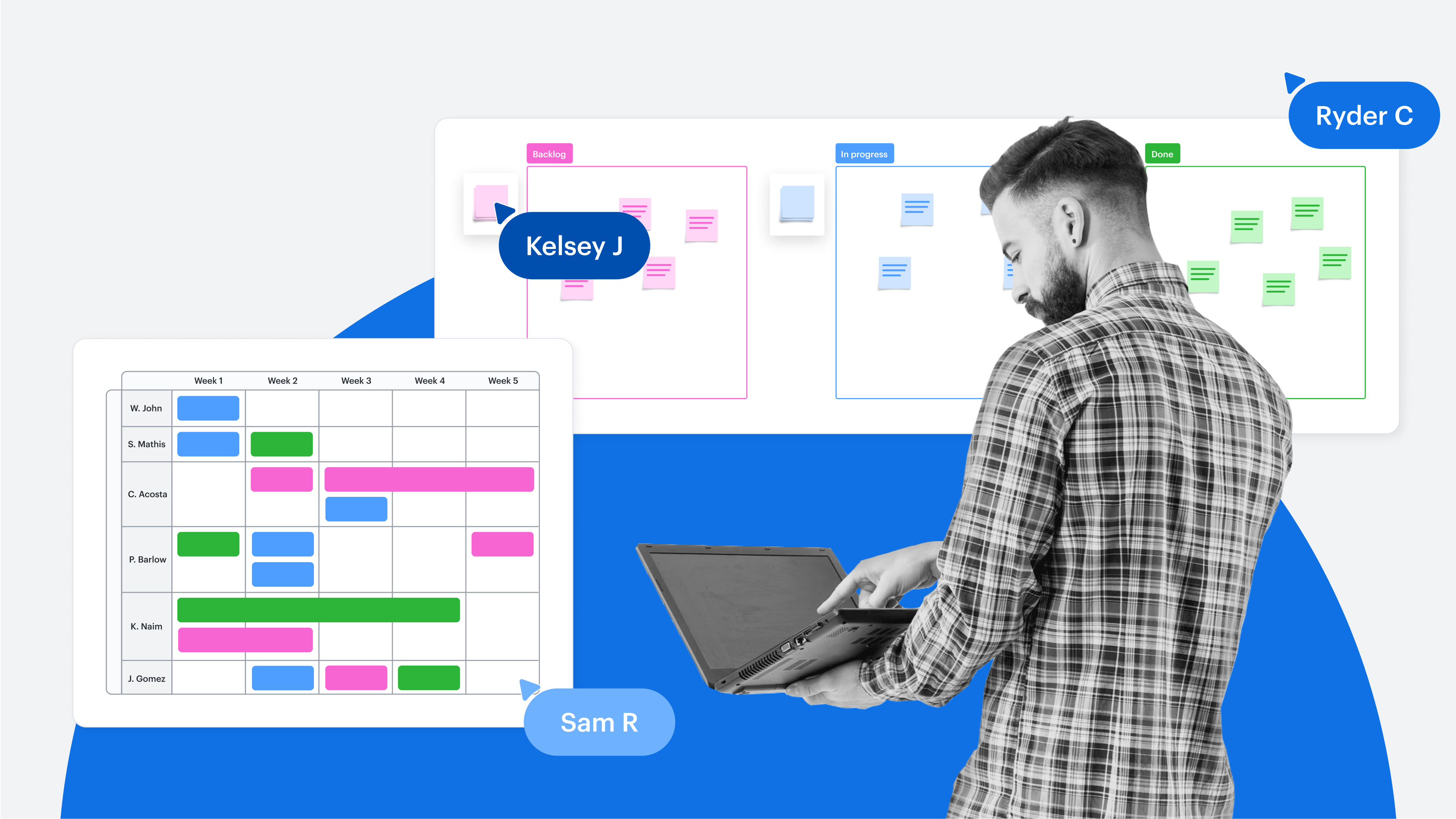
Agile for non-tech teams: How Agile for non-software projects works
Reading time: about 18 min
Topics:
Content
Content
Have you seen software teams at your organization become more engaged and efficient after using an Agile approach to the way they work, and are wondering how to extend those benefits to the entire business? The good news is, Agile can be embraced by anyone. While Agile has been traditionally used in software, it can (and should) be practiced across all departments.
According to the 17th State of Agile report, about 48% of R&D teams, 28% of business operations teams, and 17% of HR teams have already adopted Agile principles. And the most recent State of Agile Marketing report states that 96% of marketers who have applied Agile had a very positive experience.
In fact, Agile can help entire organizations adapt and respond to change effectively. Implementing Agile for business teams enhances alignment, customer satisfaction, flexibility, and more—impacting every aspect of operations.
Looking for ways Agile can be practiced for non-software projects? Check out our real-world examples of how Agile is used in non-tech teams and learn more about the fundamentals of embracing Agile.
How does Agile for non-software projects work?
Agile is a mindset that enhances adaptability, collaboration, and responsiveness to change. It encourages an iterative approach to work that focuses on continuous improvement. Fundamentally, Agile isn’t just about how work is done, but also why: to create the most value in an ever-evolving environment.
Although Agile started in software, Agile’s emphasis on adaptability, collaboration, and delivering value makes it useful in any context. The Agile mindset also helps teams establish a predictable, sustainable pace and adjust their workload to match their capacity. Agile is about more than just a way to plan tasks; in the long term, it’s a way to help teams work more effectively.
For example, a marketing team might adjust campaigns based on real-time performance data, while an HR team iterates on the hiring process after receiving candidate feedback. There are many ways non-technical teams can apply Agile to their work, which we’ll dive deeper into later on.
There are Agile frameworks such as Scrum and Kanban that help provide structure for teams looking to apply Agile effectively in non-software contexts. Teams that are new to Agile can particularly benefit from starting with a framework since it will help guide intentional adaptation. Using an Agile framework also helps teams align with the Agile Manifesto’s principles and values as they meet customer expectations, adapt to change, and improve business processes.
Sometimes, non-technical teams choose one framework, such as Scrum, and it doesn’t feel quite right, so they move on from practicing Agile in general. If you start with one framework and it’s an odd fit for your team or organization, remember there are different frameworks to choose from, and trying different approaches to embracing agility may make more sense for you.
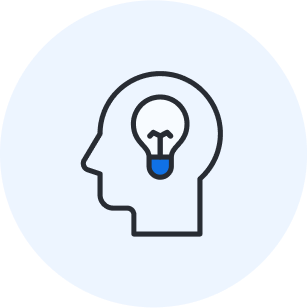
Learn more about the Agile mindset
Learn everything you need to know about Agile in our in-depth guide, including how Agile applies to the modern-day workforce.
Read moreThe benefits of using Agile for non-software teams
The Agile mindset is beneficial on both the team level and organizational level. Often, Agile teams are more engaged in work since they have more ownership, improved collaboration, and are able to focus on outcomes rather than rigid processes. This mindset increases team members’ sense of impact. Practicing Agile also gives teams more visibility into future workloads and priorities, enabling them to make better decisions faster.
As teams start practicing Agile, they can experience many benefits, including:
-
Enhanced alignment and efficiency
-
Continuous improvement
-
More accurate predictability of team capacity and commitment to deadlines
-
Delivery of value earlier and more often
-
Quicker responsiveness to business needs
-
Higher team engagement
-
Increased adaptability to change
Agile also supports the entire company by enhancing business agility. For true business agility, a company needs all of its departments to embrace Agile. Every department doesn’t have to do Agile the exact same way, but practicing Agile across the board enhances an organization’s ability to adapt and respond to change. And, an Agile business is a competitive advantage, helping companies react to changing needs or requirements in the market.

Tips for successful business agility
Learn how you can instill agility at every level for successful business transformation.
Learn moreExamples of Agile for non-tech teams
So, every team can embrace Agile—not just software teams. But how is this accomplished? We pulled together real-world examples of how different types of teams can become more Agile, from HR to project management to sales. If you work in one of the following departments, check out a few ways you can practice Agile on your team.
Agile for marketing
To embrace the Agile mindset, marketing teams can break down marketing campaigns into smaller chunks of work that can be delivered within the timeframe of sprints (team planning cycles that generally run from one to four weeks). This process allows teams to maintain focus on narrower objectives, improve the value of feedback loops, and establish more predictability and clarity on delivery timelines.
Taking an Agile approach of delivering work in sprints makes it easier for marketing teams to respond quickly to changing marketing trends and conditions. For example, a team might pivot messaging in response to social media trends. Many marketing teams also use a hybrid approach to Agile frameworks, mixing Scrum and Kanban together to follow a structure that’s often referred to as “Scrumban”.
Other ways to implement Agile for marketing include:
-
Using a Kanban board to plan and manage workflows, such as campaign flows and content production.
-
Iterating on messaging based on early audience response, utilizing real-time feedback to improve audience engagement.
-
Conducting experiments (such as A/B testing) to measure performance, then making adjustments based on that data.
-
Using iterative planning to deliver value for customers or craft new campaigns in response to competitors.
As an example of Agile in marketing, Lucid’s growth marketing team practices Agile’s emphasis on validated learning. The team constantly runs experiments, creating a hypothesis, testing it, then iterating on the hypothesis, retesting, and reiterating again—establishing a feedback loop that helps them improve.
When Lucid launched the Lucid Visual Collaboration Suite—a combination of both Lucidchart and Lucidspark—the growth marketing team made small adjustments on Lucid’s website to test how customers could be encouraged to explore the full functionality of the Lucid Suite. By running five-day “design sprints,” the team gathered information quickly and was able to iterate on their prototypes, finding the best solution to build new pricing pages.
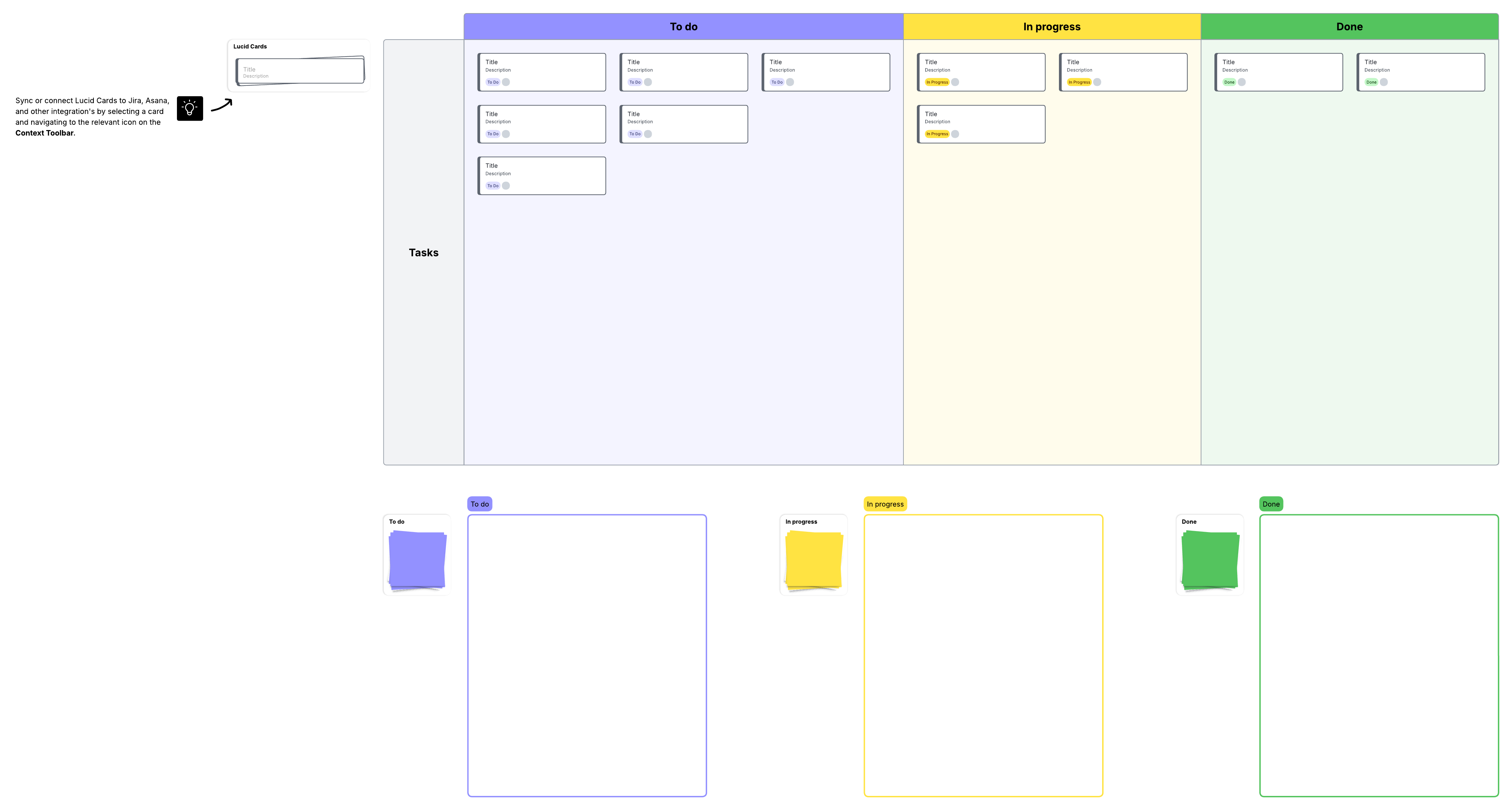
Agile for project management
To take on a more Agile approach to project management, project managers shift their focus from rigid timelines to more adaptive planning based on the business’s evolving needs, continuously refining work based on feedback and changing priorities. Agile project management also focuses on reducing bottlenecks to streamline workflows, so dependency mapping is an essential activity. Hosting retrospectives and other Scrum events is also a great Agile practice for project managers to get feedback and adjust processes accordingly.
For organizations that currently run stage-gate projects (also known as phase-gate), where projects are separated into distinct stages, Agile aligns very well with that approach to project management. State-gate projects have specific checkpoints for risk assessment and decision-making to continue or modify the project. Teams that use this method are already very close to practicing Agile.
To be more Agile in project management, project managers can:
-
Implement capacity planning where workload is adjusted to match team capacity, approaching project delivery in a more incremental, iterative way.
-
Visualize processes to eliminate or manage potential dependencies. Making work visible helps reduce the risk of bottlenecks, delays, or misalignment, especially in cross-functional initiatives.
-
Become more responsive to change throughout the entire project life cycle.
“As a program manager, it’s essential for me to be able to facilitate Agile ceremonies, enable cross-team collaboration, visualize strategy, and inform roadmaps. Lucid helps me with all of this—mapping dependencies, integrating those into execution tracking, and hosting retrospectives. All of these insights help me adjust processes.”
—Bounta Nomichith, program manager, Lucid
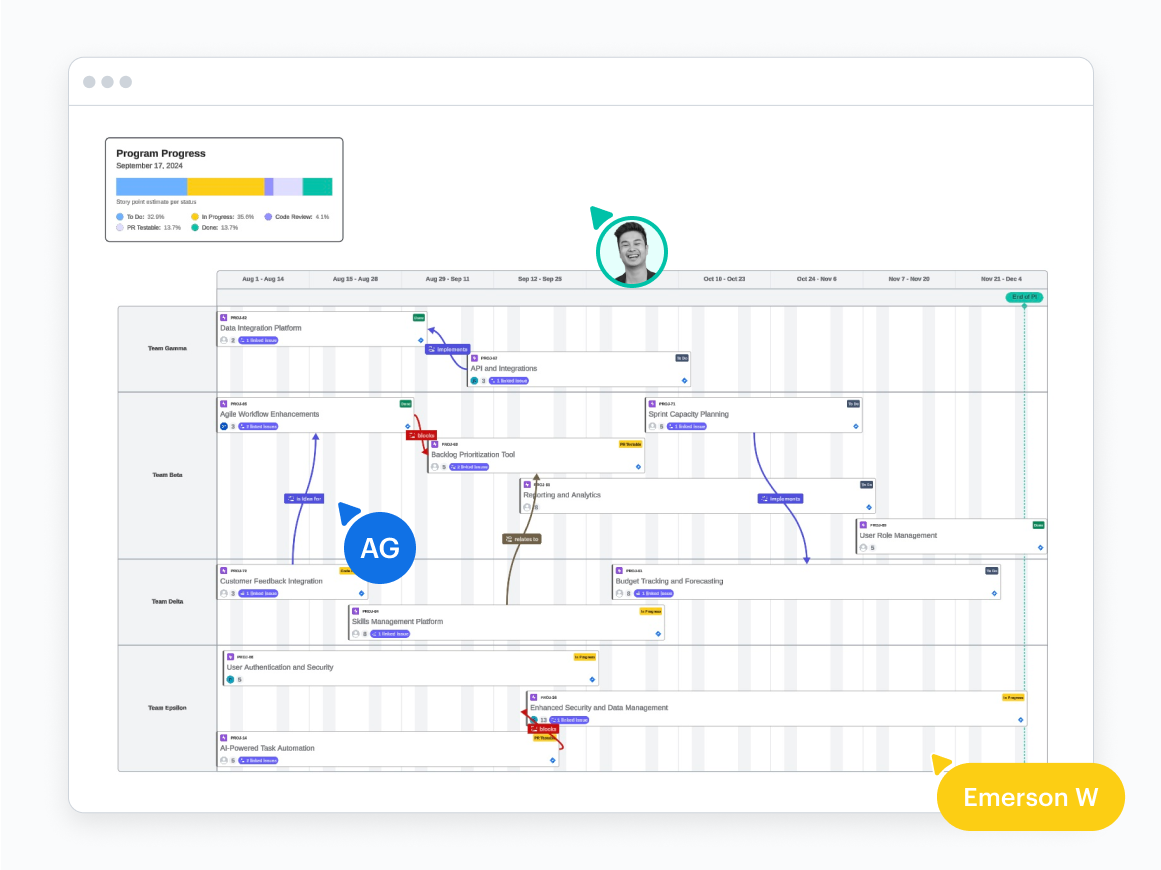
Agile for sales teams
When applying Agile in sales, team members prioritize individuals and interactions as they focus on adapting to changing customer requirements. Rather than using rigid, pre-defined sales scripts, Agile sales teams continuously refine their approach based on customer reaction and feedback. They often encounter bottlenecks like lengthy negotiations and long wait times for approvals. Agile sales focuses on data-driven decision-making, where sales teams adjust pricing strategies, outreach methods, and customer engagement tactics based on real-time analytics.
To practice Agile, sales teams can:
-
Apply iterative deal progression by testing and refining sales proposals incrementally, adjusting based on customer feedback.
-
Practice continuous qualification by frequently reassessing leads and opportunities, then prioritizing the ones most likely to convert.
-
Use Kanban boards to visualize their sales processes and identify stalled opportunities. Many Agile sales teams conduct daily standups to discuss pipeline status and blockers.
-
Conduct retrospectives to refine their outreach tactics, messaging, and deal-closing techniques based on real-time customer insights. Retrospectives are also a great opportunity to celebrate wins, learn from each other, and understand successes.
Lucid’s sales teams have increased their agility to close deals faster. By conducting discovery workshops with customers and hosting standups, teams have been able to incrementally improve their outreach and ensure that customer collaboration is prioritized from end to end. The sales team also values retrospectives as a great opportunity to come together, as it’s easy to feel siloed in sales. During retrospectives, they celebrate wins, learn from each other, and discuss successes to implement in their future outreach.
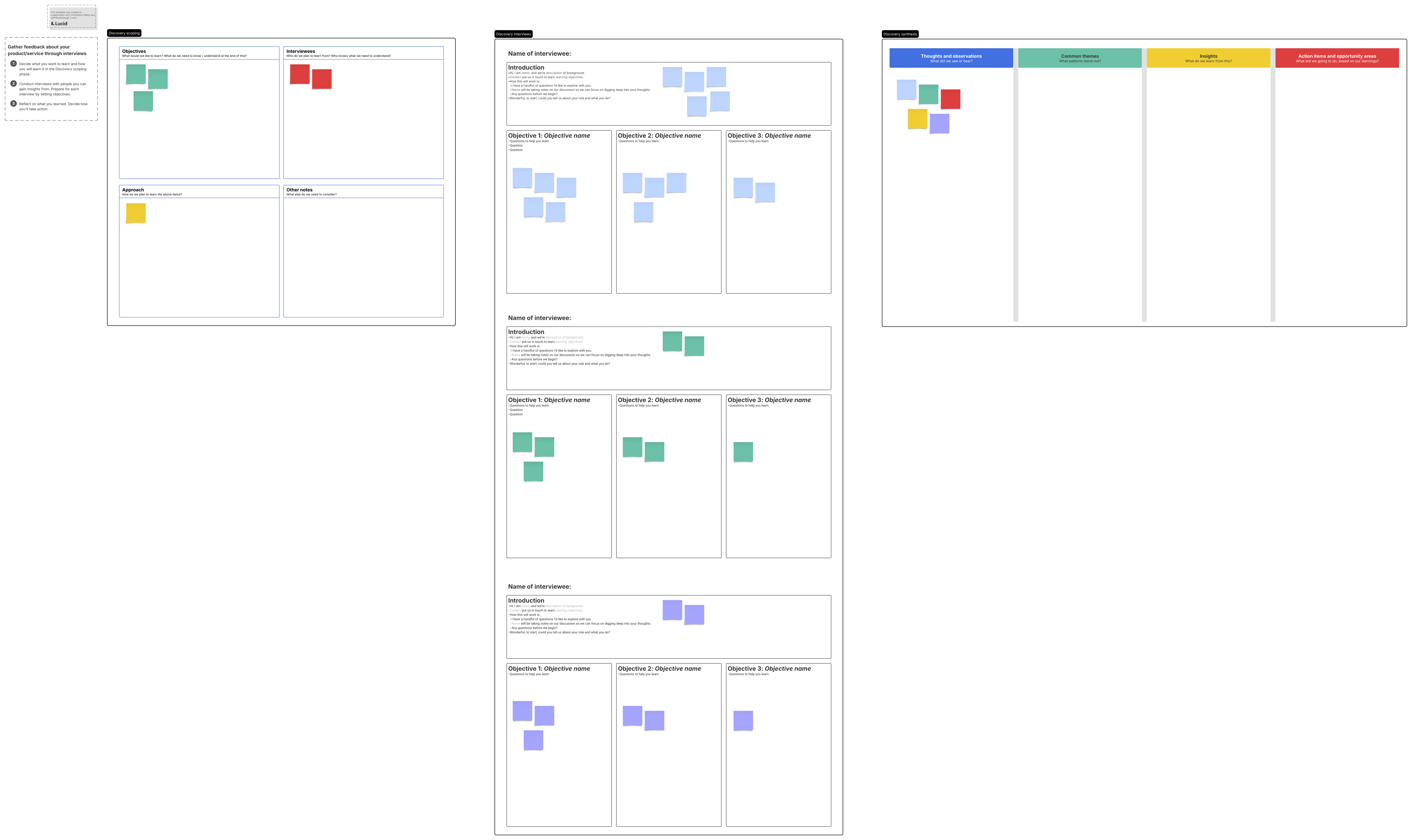
Agile for HR
What is Agile in HR? Agile HR often looks to streamline the onboarding process in the same way that Agile accelerates product delivery for software teams. For example, a company may want to begin allowing new hires to access systems on their very first day, which requires coordination with other departments such as IT and finance. This type of goal—focusing on adaptability, reducing wait times, and improving cross-functional coordination—very much aligns with Agile thinking.
Other ways that HR teams can apply the Agile mindset include:
-
Coordinating improvement and training plans for employees to continually learn new skills or develop their careers.
-
Focusing on faster response times to certain situations, such as adapting to changing market conditions. Improving this response time and enhancing communication with employees helps support a business’s overall agility.
-
Creating a flexible approach that changes as the workforce changes, for example, by iterating on hybrid work policies.
-
Refining onboarding processes based on employee feedback and improving the recruiting timeline for job candidates.
For example, Lucid’s recruitment team has practiced Agile more and more in the last few years, increasing transparency and visibility into their workload. By creating a team room board in Lucid, the recruitment team implemented goal tracking, conducted weekly retrospectives, and created a safe space for checking in with each other—all of which helped them focus on higher-value work.
“Our team was drowning in silos,” explains Kayla King, Lucid’s senior go-to-market recruiter. “Some individuals would be drowning in work, and others would have light workloads, but no one was speaking about it. So we created a system to increase visibility and do continuous check-ins on bandwidth. Recruiting is atypical for Agile in the sense that we do one-week sprints, but by compartmentalizing our work in this way, we’ve been significantly more effective. By improving the way our team worked together, we were able to provide higher value to job candidates.”
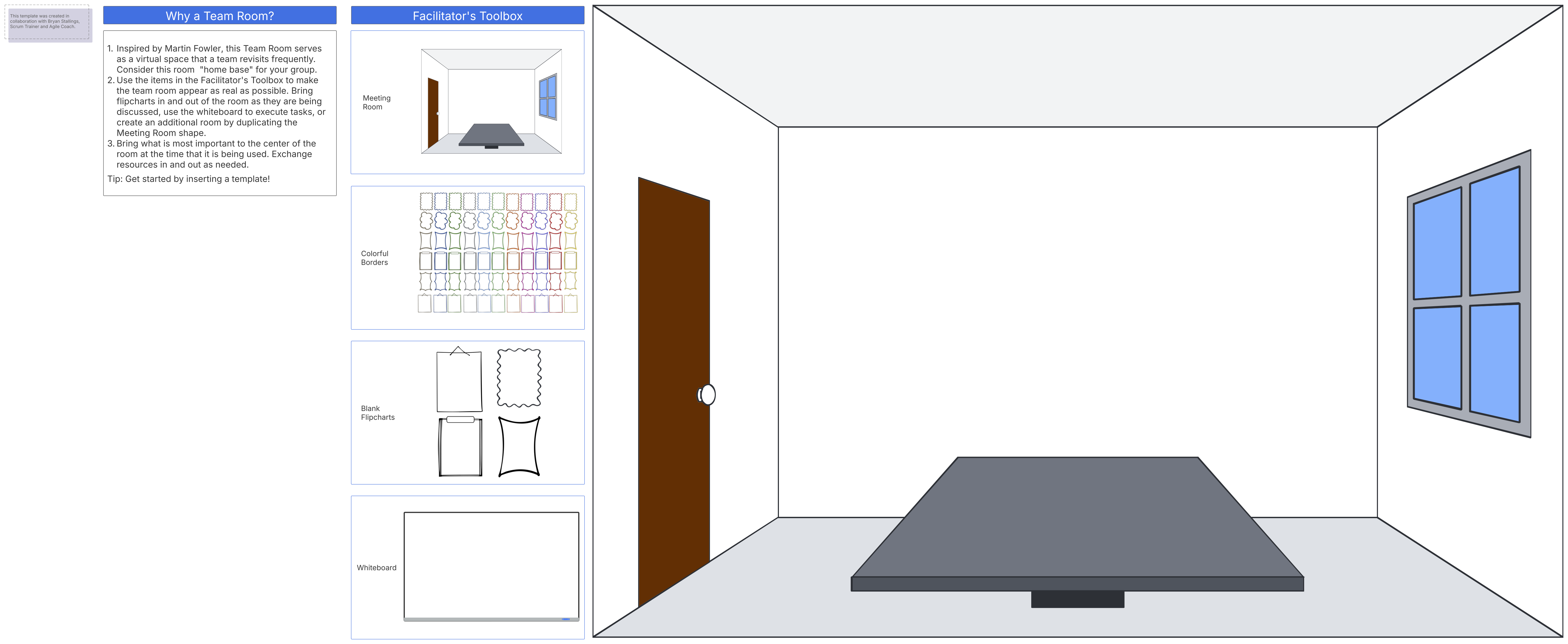
Agile for finance
Applying the Agile methodology in finance can happen without abandoning financial discipline; Agile simply makes financial planning more adaptable to changing business needs versus traditional project-based funding, which typically occurs on an annual basis. Agile finance teams align their budget cycles with their strategic planning cycle so funding and resources can be allocated where they’re needed most.

Agile finance particularly plays a critical role when companies use Agile at scale, because it ensures that funding is flexible enough to align with evolving priorities. To become more Agile in finance, funding must shift to support ongoing rather than fixed initiatives.
Some common ways to apply Agile to financial planning include:
-
Using Agile budgeting and forecasting practices, such as incremental budget planning and maintaining a flexible budget.
-
Conducting continuous risk assessment rather than front-loaded risk analysis by proactively identifying and managing risk with an iterative approach.
-
Adapting the Kanban framework to visualize work in progress and what’s to be done.
-
Focusing on adaptability to evolving market environments and business conditions rather than having a rigid, upfront approach to financial management.
For example, a major global food and beverage company has used Agile practices for more adaptive funding of their product teams. This company used Lucid for visual forecasting and was able to conduct scenario planning while uncovering new opportunities to accelerate high-priority products. By taking an Agile approach to finances, the company discovered room in their budget they previously didn’t know they had and they were better able to manage their funding, making less costly mistakes.
Agile for operations
Operations teams often focus on eliminating waste and improving flow, which aligns well with Agile and Lean principles. Typically, operations teams use value stream mapping to visualize inefficiencies within a process and then iteratively improve that process. They can also use Kanban boards, dependency mapping, or flow efficiency metrics to track and optimize workflow. Involving stakeholders is also important for operations teams, so Agile operations focuses on transparency and alignment.
Here are a few other ways that operations teams can practice the Agile mindset:
-
Improve efficiency and processes across an organization by identifying bottlenecks and other sources of waste.
-
Plan strategic initiatives by brainstorming achievable solutions and creating timelines for putting those solutions into action.
-
Increase transparency for stakeholders to enhance alignment by conducting standups, creating real-time dashboards, or otherwise providing continuous reporting.
For example, Lucid’s operations team practices Agile by brainstorming solutions for improving existing processes and identifying areas of risk before implementing strategic initiatives. They also align cross-functional teams by providing the most up-to-date and critical information to stakeholders via dynamic documentation. By using visuals instead of text-heavy spreadsheets to plan and share OKRs, the team ensures transparency and alignment.
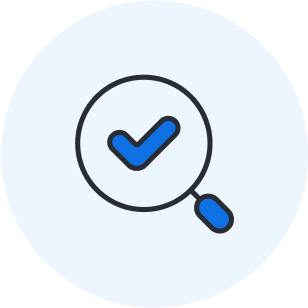
A complete guide to value stream management
Use value stream mapping to visualize workflows and help your operations teams become more Agile.
Get the guideAgile for customer success
A few ways that customer success teams use Agile principles are iterating on customer onboarding, improving customer engagement strategies, and leveraging proactive issue resolution. These teams prioritize individuals and interactions—one of the values of the Agile Manifesto. For enhanced customer collaboration, they include customers in planning sessions, establish regular check-ins or alignment meetings, and even invite customers to participate in quarterly business reviews (QBRs).
Other ways customer success teams can practice Agile principles include:
-
Building customer journey maps and other resources to gather input and ensure alignment with customers.
-
Using feedback loops to refine documentation, such as customer training materials, knowledge bases, and self-service resources based on real customer usage.
-
Working with product teams to convey the voice of the customer and iterate on service offerings.
-
Responding quicker to changes in customer needs, which reinforces the Agile approach of continuous value delivery.
“Our team of customer success managers (CSMs) commonly use Agile frameworks and features in Lucid with customers to ensure consistent engagement and progressing timelines. Since they’re engaged in several workstreams with any given customer at a time, CSMs use Lucid to collaboratively align on priorities and ensure that each initiative is moving forward and being prioritized correctly.”
—Connor Stewart, senior manager, customer success, Lucid
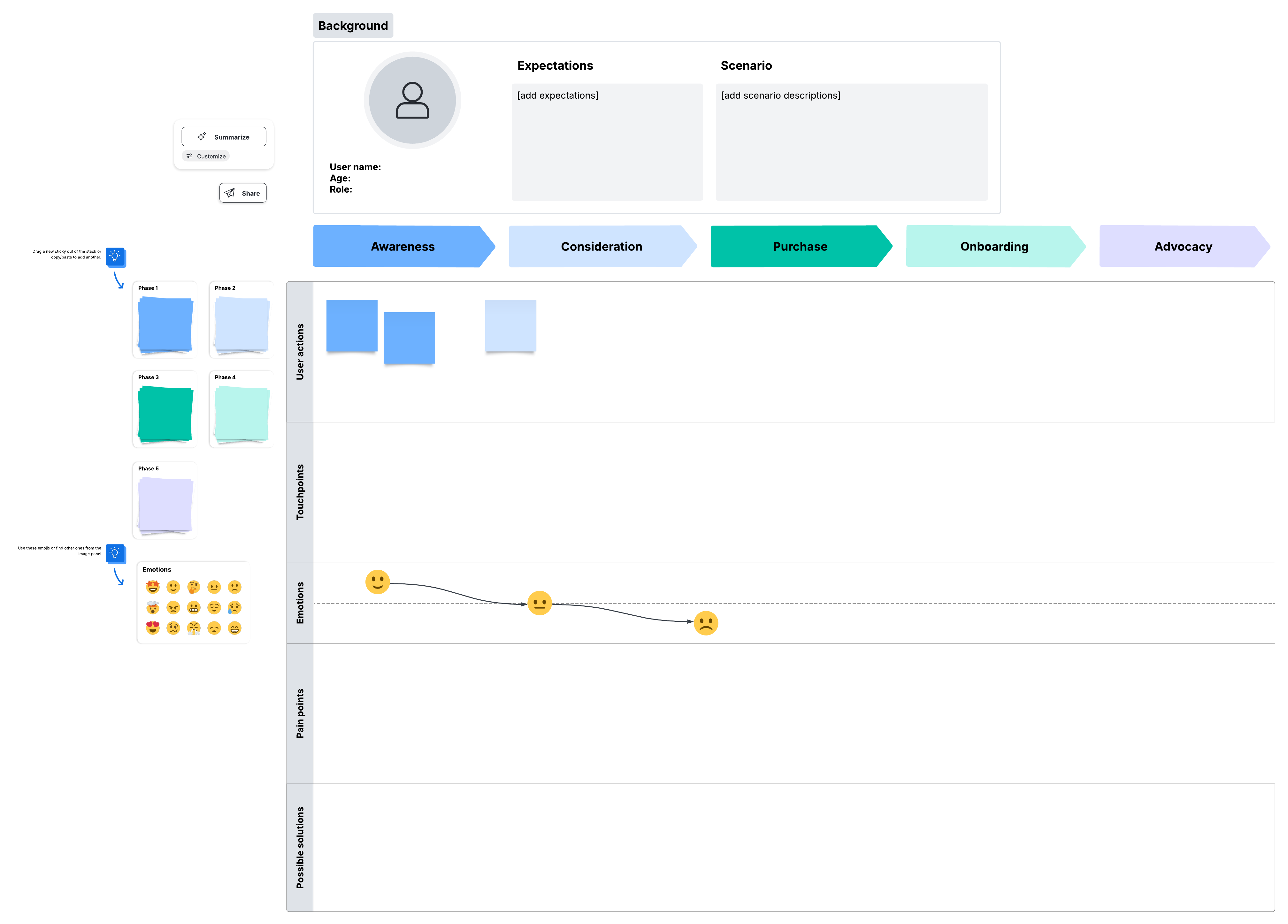
A note on practicing Agile for distributed teams
Many companies today are shifting to a distributed workforce, where teams are hybrid or fully remote. For these businesses, ensuring consistent communication, transparency, and alignment is even more important—and more challenging. Agile can actually enhance alignment and collaboration among distributed teams, helping people sustain the values of the Agile manifesto when they don’t necessarily work together face-to-face.
A virtual team space for everyone to come together is essential for practicing Agile among distributed teams, especially if an initiative involves not only multiple departments but also multiple locations or timezones. By using visual collaboration, people can centralize documents and boost alignment while also making sure that every voice has a chance to be heard.
Distributed teams can also use the following Agile practices:
-
Conducting daily standups to stay aligned on workload and team capacity.
-
Hosting quarterly planning sessions (such as big room planning) virtually, ensuring that everyone is able to participate regardless of location.
-
Tracking progress and providing transparency on initiatives with timelines, Kanban boards, and roadmaps.
-
Enhancing communication and ensuring quicker response to change by making plans visual and accessible to everyone.
Since Lucid has a distributed workforce that spans multiple countries, teams across Lucid come together to collaborate virtually. By using the Lucid Suite, teams can facilitate meetings and create team hubs to centralize communication, regardless of where each team member is located. Many teams at Lucid enjoy using Visual Activities to easily capture input from everyone when they need to prioritize upcoming marketing content to support a new launch, for example, or they’re brainstorming new ideas to improve an HR process. Visual Activities help accelerate alignment and decision-making while increasing agility for teams across the organization.
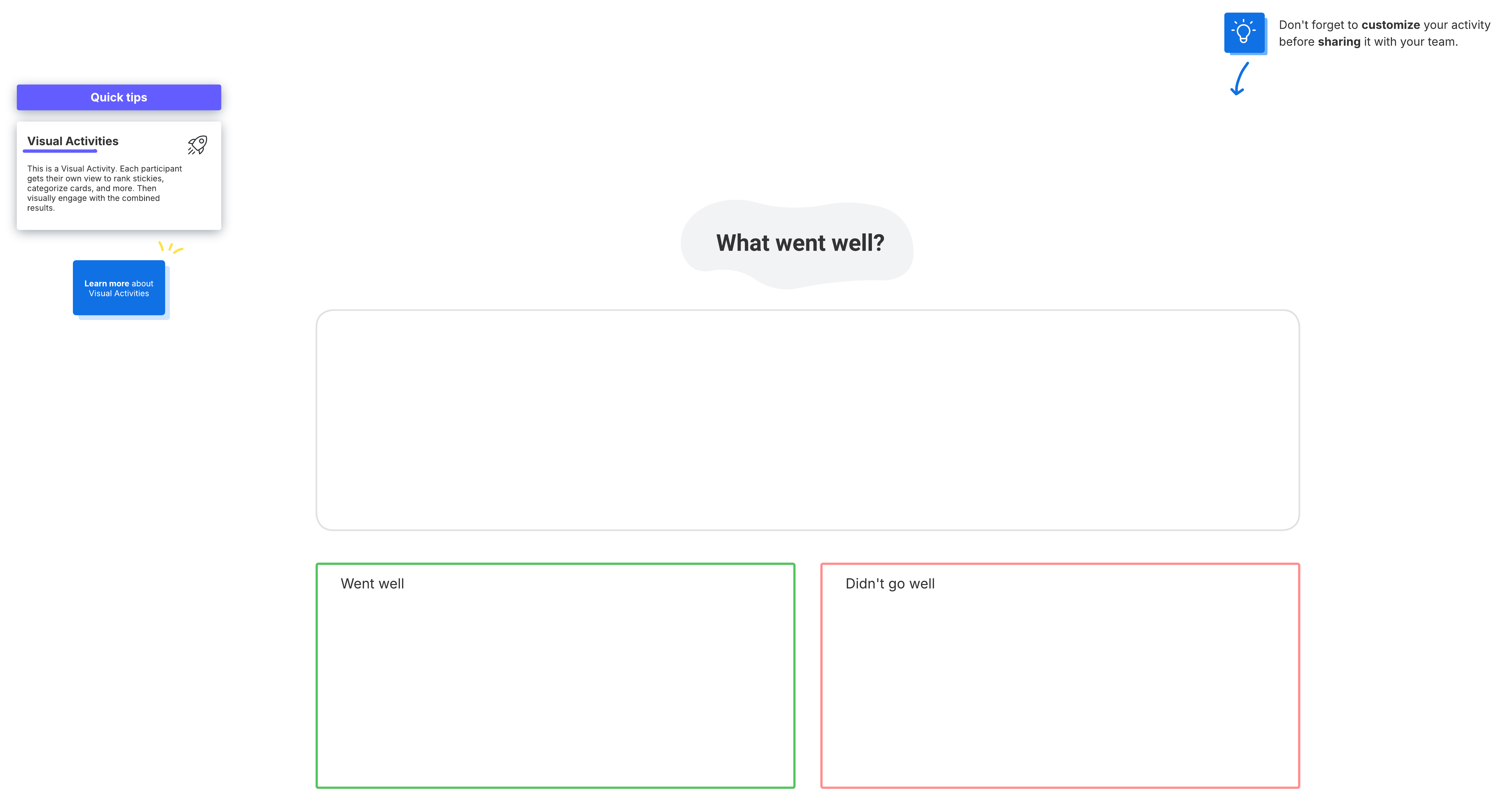
Tips for getting started on practicing Agile for your team
Now you’ve seen plenty of examples of how teams practice Agile principles and values, regardless of their type of work. How can you get started with your own team? Check out our tips:
-
Identify what needs to be improved or what your goals are for embracing Agile. Are you trying to increase efficiency? Enhance team alignment? Incorporate customer feedback more? It may help to start by looking closely at your pain points or common challenges to recognize Agile’s relevance for you. Too many bottlenecks, slow project execution, and difficulty adapting to change are all things that practicing Agile can help improve.
-
Start with a regular retrospective. After you’ve identified what needs improvement, establish recurring retrospectives, perhaps every other week, to have a consistent conversation about Agile and which actions to take over time. Starting with a simple, ongoing discussion around improvement helps many teams begin to adopt the Agile mindset.
-
Seek guidance from experienced teams or other resources. Frameworks such as Scrum and Kanban are a great place to start, but as you determine your approach to start practicing Agile, ask for help from people who have done it themselves so you have the knowledge you need. Receiving guidance is the best way for a team that’s brand-new to Agile to start experimenting.
-
Take it slowly. You don’t have to try everything that’s Agile all at once, and your agility won’t increase overnight. Take it one aspect at a time with simple experiments. Start using a Kanban board to track your team’s workflow, try out daily standups, or invite stakeholders to planning sessions. Find one thing that works for your team before you move on to other possibilities.
-
Gain leadership support when possible. In order for true business agility to take place, the whole organization should be practicing the Agile mindset. When you can, secure leadership alignment to further your Agile practices. Highlight organizational blockers that you could use leadership support to overcome, and keep track of metrics that show how your team is evaluating processes and addressing challenges.
-
Use visual collaboration to enhance transparency and alignment. With the power of visuals, it’s easier to ensure cross-functional collaboration and transparency with stakeholders. You can even find templates that make it easy to facilitate Agile events like sprint planning or daily standups. Find a visual collaboration solution for your team to create a central place for documentation and bring everyone together.
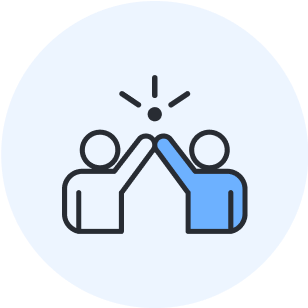
How visual collaboration supports Agile teams
Learn how you can use visual collaboration to become more Agile.
Learn moreStart practicing Agile for business teams
While the Agile movement began with software development, it’s a mindset that can be practiced by anyone, regardless of their type of work. Implementing Agile for business teams is a great way for companies to build adaptability, leading to true business agility and continuous improvement.
Lucid has all the Agile resources you need to get started, no matter which department you work in. Check out our solutions for Agile teams to see how you can use visual collaboration to maintain Agile principles and values across your entire organization.

Lucid for Agile teams
See how Agile teams use Lucid to collaborate, align, and visualize work—all across the board.
Go nowAbout Lucid
Lucid Software is the leader in visual collaboration and work acceleration, helping teams see and build the future by turning ideas into reality. Its products include the Lucid Visual Collaboration Suite (Lucidchart and Lucidspark) and airfocus. The Lucid Visual Collaboration Suite, combined with powerful accelerators for business agility, cloud, and process transformation, empowers organizations to streamline work, foster alignment, and drive business transformation at scale. airfocus, an AI-powered product management and roadmapping platform, extends these capabilities by helping teams prioritize work, define product strategy, and align execution with business goals. The most used work acceleration platform by the Fortune 500, Lucid's solutions are trusted by more than 100 million users across enterprises worldwide, including Google, GE, and NBC Universal. Lucid partners with leaders such as Google, Atlassian, and Microsoft, and has received numerous awards for its products, growth, and workplace culture.
Related articles
How 7 companies use Lucid to improve Agile processes and increase efficiency
Check out how Lucid helped these seven companies enhance their agility and efficiency.
How Agile teams use Lucid to enhance alignment, transparency, and connection
Check out how Agile teams use Lucid to boost alignment, connection, and more.
How business agility transformation can help your bottom line (+ tips for success)
In this blog post, we review a few tips for developing an agile business model. Read about agile business strategies and benefits to transform your business.
How visual collaboration supports Agile teams
From increasing transparency to simplifying documentation, learn why Agile teams today rely on visual collaboration.
